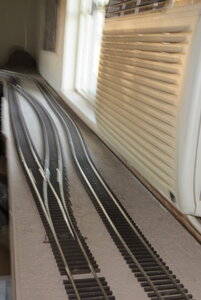Brakeman Hal
Well-Known Member
My O-Scale 2-Rail GP-35 Diesel runs fine all around my 130-foot folded dogbone, except for one point, where there is a transition from a curve to a straight, and this is where the front truck derails.
My other engines and my rolling stock have no problem at this point, and this is because their trucks pivot freely.
How can I free up the front truck on the offending engine? Remove it and lube it?
Thanks,
Brakeman Hal (Engine shown)

My other engines and my rolling stock have no problem at this point, and this is because their trucks pivot freely.
How can I free up the front truck on the offending engine? Remove it and lube it?
Thanks,
Brakeman Hal (Engine shown)


